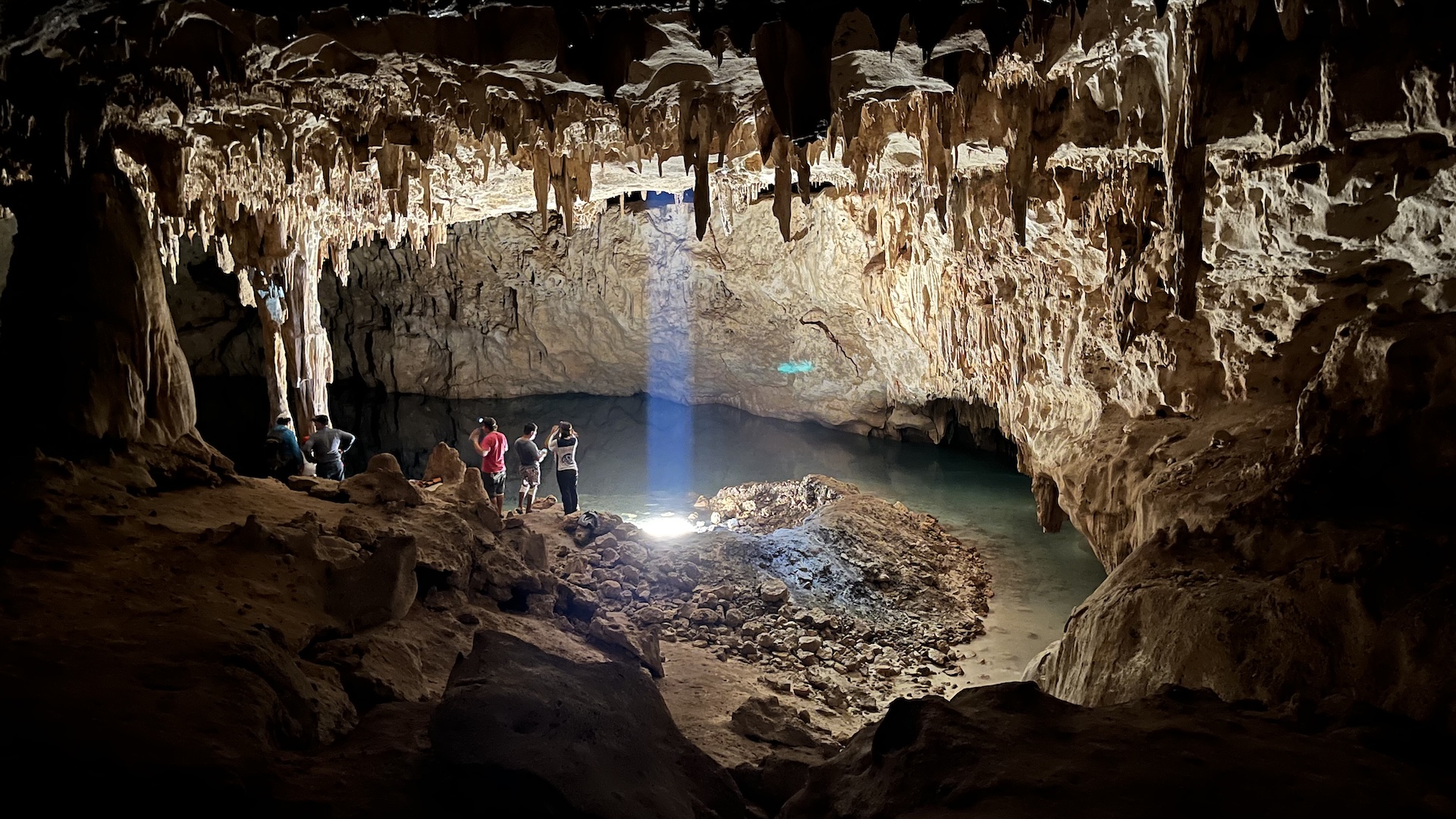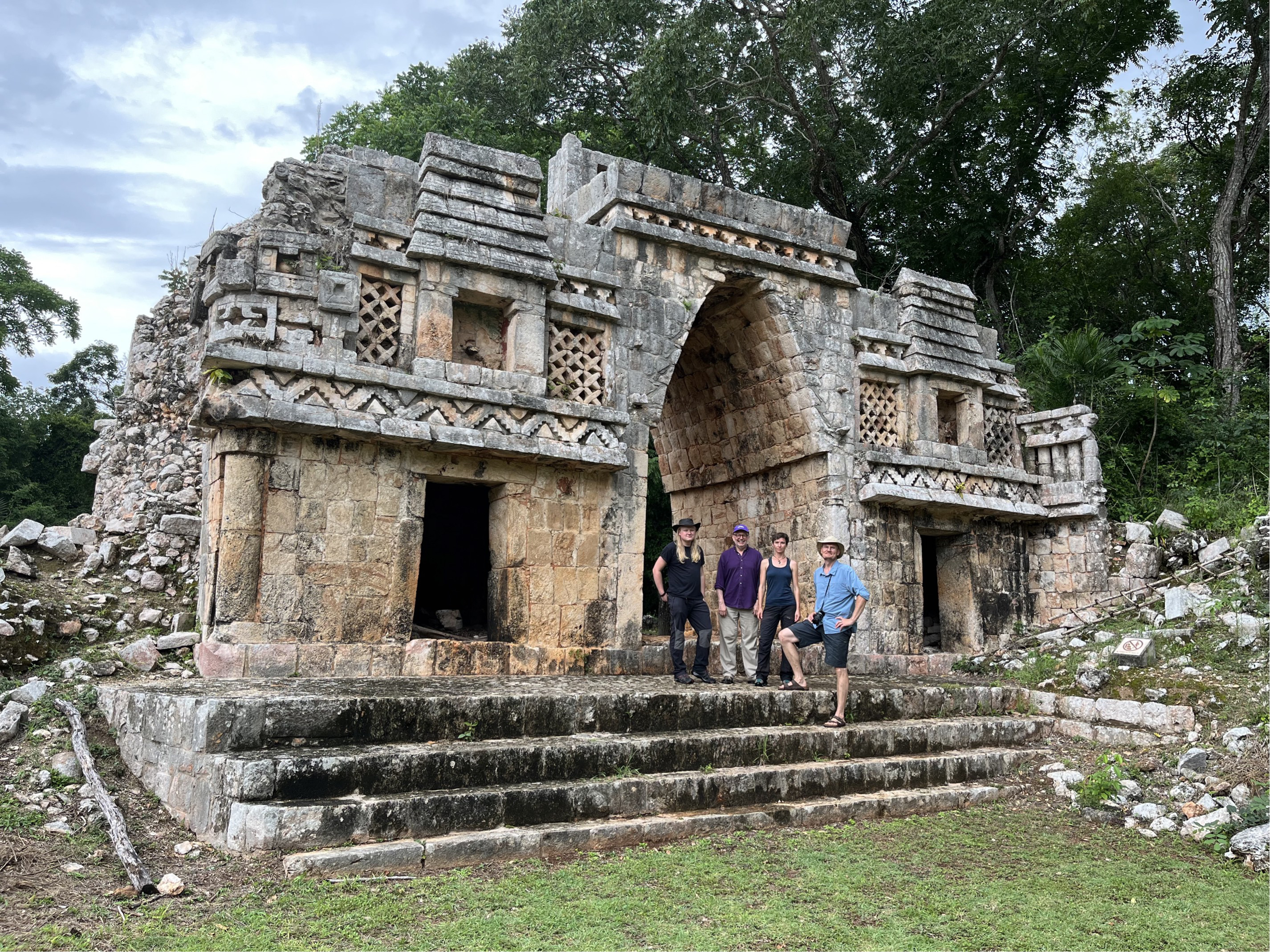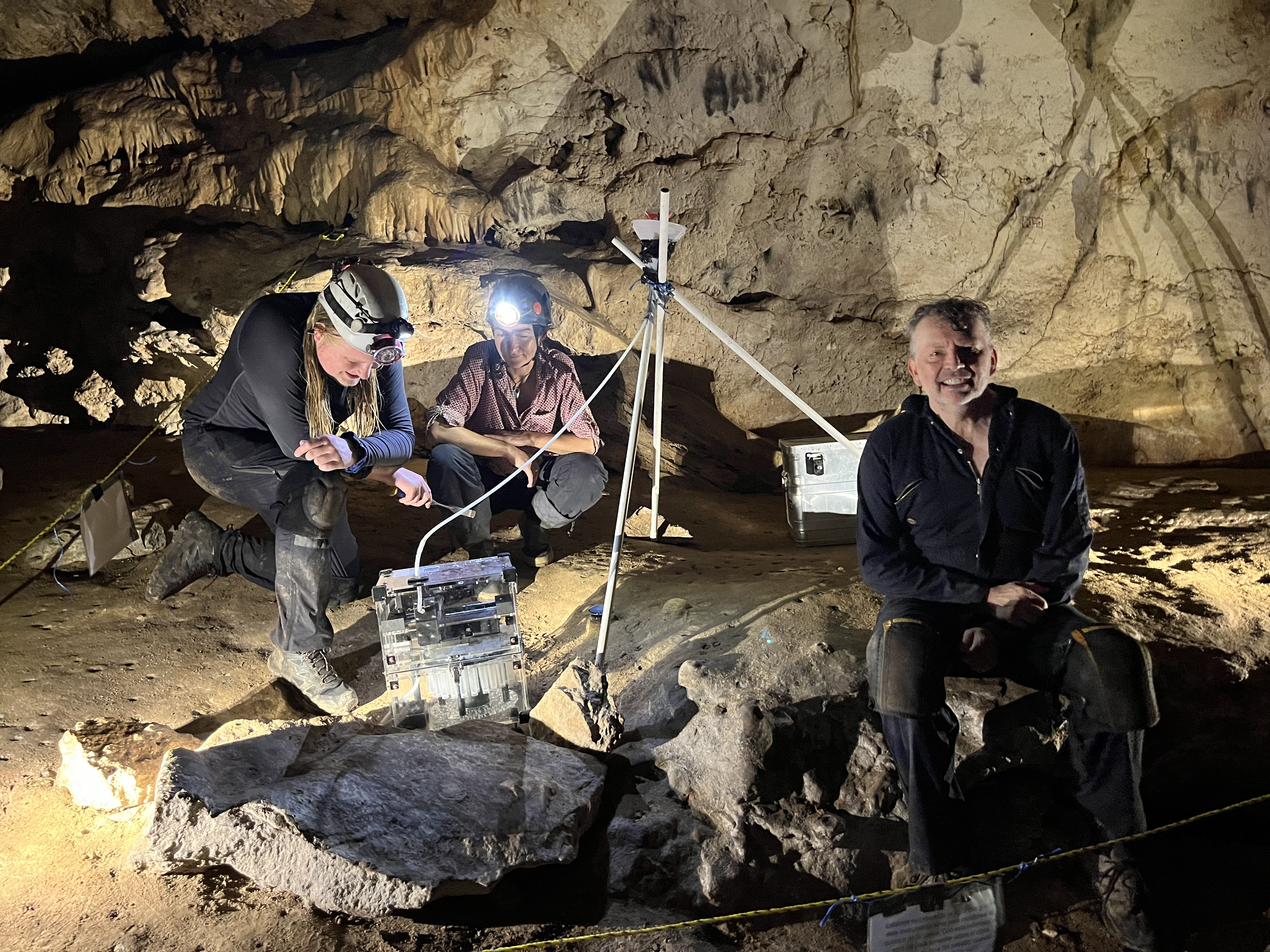13-year drought crippled Maya on Yucatán Peninsula 1,000 years ago, study finds
An analysis of a stalagmite within a Mexican cave reveals detailed evidence of drought that contributed to the downfall of the Maya civilization in the area 1,000 years ago.

A stalagmite deep inside a cave in Mexico's Yucatán Peninsula suggests that multiple droughts, including one lasting 13 years, may have contributed to the decline of the Maya civilization in the area.
By studying the mineral formation, the researchers could paint a detailed picture of rainfall by season, which enabled scientists to closely compare climate records with archaeological evidence of instability, according to a study published Wednesday (Aug. 13) in the journal Science Advances.
While the cause — or causes — of the Maya decline in the Yucatán Peninsula are still uncertain, many scientists think droughts played a major role. Previous studies suggested that years-long droughts occurred in southern Mexico during the ninth and 10th centuries, in what's known as the Terminal Classic period. Maya populations in the region declined during that time, while others thrived farther north, where the climate was drier, the study reported.
"This period in Maya history has been a cause of fascination for centuries," study co-author Daniel H. James, who conducted the research while he was a doctoral student in the Department of Earth Sciences at the University of Cambridge, said in a statement. "There have been multiple theories as to what caused the collapse, such as changing trade routes, war or severe drought, based on the archaeological evidence the Maya left behind. But in the past few decades, we've started to learn quite a lot about what happened to the Maya and why, by combining the archaeological data with quantifiable climate evidence."
To better understand rainfall patterns during the Terminal Classic, James and his colleagues studied the annual growth layers of a stalagmite from a cave near Tecoh, a municipality in the Yucatán. Like tree rings, these layers record information about how much water the stalagmite received from water dripping from the cave's ceiling in a given year. Variations in the chemical composition of each layer gave the scientists information about rainfall in each year's wet season, which runs from May to October.
"Knowing the annual average rainfall doesn't tell you as much as knowing what each individual wet season was like," said James, who is now an archaeologist at University College London. "Being able to isolate the wet season allows us to accurately track the duration of wet season drought, which is what determines if crops succeed or fail."
Related: Why did the Maya civilization collapse?
Get the world’s most fascinating discoveries delivered straight to your inbox.

Researchers explore the Yucatán site of Labna, which the Maya seem to have abandoned during the Terminal Classic.

Study co-researcher Daniel H. James studies drip rate at a cave in the Yucatán.

From left, Daniel H. James, Ola Kwiecien and David Hodell put in a SYP drip water autosampler at a cave in the Yucatán so they can analyze seasonal changes in drip chemistry.
The team found evidence that there were eight wet-season droughts lasting longer than three years between A.D. 871 and 1021, some separated by just one wet year. These extended dry periods would have threatened Maya agriculture and possibly caused famines, the researchers said.
Though Maya in the region carefully managed their water in reservoirs and cisterns, the droughts were likely severe enough to destabilize the regional capital of Uxmal, the researchers wrote in the study. The Maya stopped building monuments and inscribing dates on them during these periods of drought, and the site's political system collapsed a few years after the most severe drought.
But other sites, like the nearby Chichén Itzá, were able to weather the droughts. While date inscription on monuments still stopped during the droughts, the site recovered, possibly because they relied on their extensive trade network for crops from central Mexico, the researchers noted.
—Maya civilization had 16 million people at peak, new study finds — twice the population of modern-day NYC
—Genomes from ancient Maya people reveal collapse of population and civilization 1,200 years ago
—Archaeologists discover 'Land of the White Jaguar,' centuries-old stronghold of rebel Maya in Mexico
The findings help shape a clearer picture of Maya decline in the Yucatán during the Terminal Classic period and will enable scientists to compare more detailed climate records with archaeological evidence of societal change.
"It hasn't been possible to directly compare the history of individual Maya sites with what we previously knew about the climate record," James said in the statement. "Stalagmites allow us to access the fine-grained detail that we've been missing."
Ancient Maya quiz: What do you know about the civilization that built pyramids across Mesoamerica?

Skyler Ware is a freelance science journalist covering chemistry, biology, paleontology and Earth science. She was a 2023 AAAS Mass Media Science and Engineering Fellow at Science News. Her work has also appeared in Science News Explores, ZME Science and Chembites, among others. Skyler has a Ph.D. in chemistry from Caltech.
You must confirm your public display name before commenting
Please logout and then login again, you will then be prompted to enter your display name.


